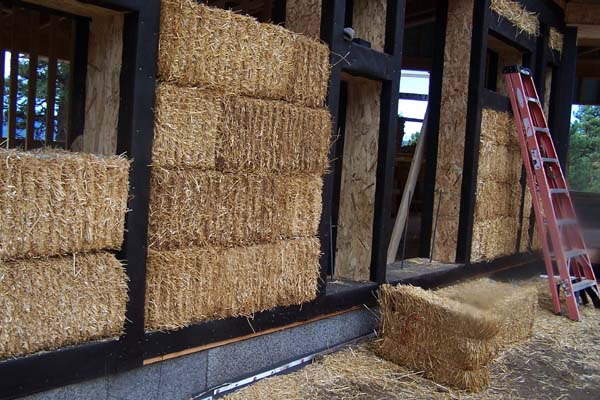Stacking straw bale walls-shown here. The wooden members make for easy straw bale wall infill. We have broken into the building grade straw bales we have obtained and are busy stacking away. The San Juan valley in southern Colorado is known for excellent quality straw bales. Most of the straw bales we use are from the area.
Once the bales have been stacked tightly, they will be cinched down for pre-compression. Then the rebar pins will be pounded from the top. And the small gaps, of course, will be packed tight with loose straw. Any potential air gaps must be tended to. The final coats of plaster will also close in any air gaps, but the ideal is as tight a wall as physically possible.
Other methods of framing and stacking bales are possible, of course. In the project in this straw bale home, the bales were stacked on edge. Even though some thickness of the walls was sacrificed, it was necessary to curve the bales. All of the research we have seen tells us that bales on edge lose only a minimum of insulation value. In addition, less bales are required when stacking straw bale walls on edge. This link highlights bales stacked on edge – http://earthentouchbuilders.com/gallery-category/straw-bale-home-hybrid-new-mexico/
the straw bale walls are in the process of receiving their infill


